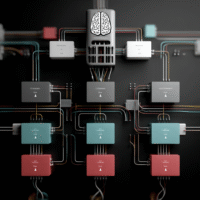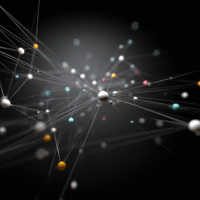Vladimir Dyachkov PhD
-
Anthropic Unveils Claude Sonnet 4.5: The Ultimate AI Tool for Software Engineers and Developers
Anthropic has recently launched Claude Sonnet 4.5, a significant upgrade that sets a new standard in software engineering and real-world computer usage. This update brings several enhancements, including Claude Code checkpoints, a native VS Code extension, API memory/context tools, and an Agent SDK designed to mimic the internal structures used by Anthropic. Notably, the pricing […] ➡️➡️➡️
-
Unlock 100K-Context LLM Inference on 8GB GPUs with oLLM: A Game-Changer for Data Scientists and AI Researchers
Understanding oLLM oLLM is a lightweight Python library designed for running large-context language models on consumer-grade NVIDIA GPUs. It addresses the challenges faced by data scientists, machine learning engineers, and AI researchers who often struggle with limited GPU memory and the high costs associated with multi-GPU setups. With oLLM, users can maximize their hardware capabilities […] ➡️➡️➡️
-
Designing Interactive Dash and Plotly Dashboards: A Guide for Data Analysts and Developers
Creating an interactive dashboard can seem daunting, but with the right tools and guidance, it becomes an engaging and rewarding process. This article will walk you through designing an interactive dashboard using Dash, Plotly, and Bootstrap, focusing on callback mechanisms that enhance user interaction. Whether you’re a data analyst, business intelligence professional, or software developer, […] ➡️➡️➡️
-
Ensuring AI Safety: A Developer’s Guide to OpenAI’s Moderation and Best Practices
Ensuring the safety of AI in production is a critical responsibility for developers. OpenAI has set a high standard for the responsible deployment of its models, focusing on security, user trust, and ethical considerations. This article will guide you through the essential safety measures that OpenAI encourages, helping you create reliable applications while contributing to […] ➡️➡️➡️
-
AI-Driven Cybersecurity: Achieve 3.4x Faster Threat Containment with an Autonomous Immune System
Understanding the Target Audience The research on an AI agent immune system for adaptive cybersecurity primarily targets cybersecurity professionals, IT managers, and decision-makers in organizations utilizing cloud-native architectures. These individuals face the challenge of securing their systems while also managing performance and resource constraints. Pain Points Slow response times to security threats due to centralized […] ➡️➡️➡️
-
Gemini Robotics 1.5: Revolutionizing Robotics with DeepMind’s ER↔VLA AI Stack
Gemini Robotics 1.5 by Google DeepMind marks a significant leap in the integration of artificial intelligence and robotics. Designed for business professionals, researchers, and developers, this innovative platform addresses common challenges faced in the fields of AI and automation. Understanding the target audience is crucial; these individuals often seek advanced solutions that enhance operational efficiency […] ➡️➡️➡️
-
Top 10 Local LLMs of 2025: A Comprehensive Comparison for AI Professionals
As we step into 2025, local Large Language Models (LLMs) have seen remarkable advancements. The landscape is now populated with robust options that cater to various needs, from casual use to serious applications in business and research. This article delves into the top ten local LLMs available today, focusing on their context windows, VRAM targets, […] ➡️➡️➡️
-
“Gemini 2.5 Flash-Lite: The Fastest AI Model for Developers and Businesses”
Understanding the Target Audience The latest Gemini 2.5 Flash-Lite Preview is designed for a specific group of professionals: AI developers, data scientists, and business managers in tech-driven industries. These individuals face challenges such as improving efficiency, managing costs, and ensuring reliable AI performance. Their main focus is on optimizing operational expenses while maintaining high-quality outputs […] ➡️➡️➡️
-
Getting Started with Asyncio: Boosting AI Application Performance with Asynchronous Python
In today’s fast-paced world of artificial intelligence, performance is key. When working with Large Language Models (LLMs), developers often find themselves waiting for API responses or multiple calls to finish. This is where asyncio comes in. Many developers use LLMs without realizing that asynchronous programming can significantly enhance their applications. What is Asyncio? Python’s asyncio […] ➡️➡️➡️
-
Build an Intelligent AI Desktop Automation Agent with Natural Language Commands
Building an intelligent AI desktop automation agent is an exciting venture that merges natural language processing (NLP) with practical automation tasks. This guide will help you navigate the process of creating a user-friendly agent capable of executing commands in a simulated desktop environment, all while using Google Colab. Understanding the Audience Before diving into the […] ➡️➡️➡️
-
Revolutionize AI Safety with Qwen3Guard: Real-Time Multilingual Guardrail Models for Developers and Enterprises
Understanding Qwen3Guard and Its Impact on AI Safety In an era where artificial intelligence (AI) is rapidly evolving, the need for robust safety measures has never been more crucial. Alibaba’s Qwen team has stepped up to the challenge with the launch of Qwen3Guard, a groundbreaking multilingual guardrail model family designed specifically for real-time safety in […] ➡️➡️➡️
-
Hugging Face Smol2Operator: Open-Source Pipeline for Training GUI Coding Agents
Hugging Face has made significant strides in the realm of artificial intelligence with the release of Smol2Operator, a fully open-source pipeline designed to transform a 2.2 billion parameter vision-language model (VLM) into a functional graphical user interface (GUI) coding agent. This innovative tool is tailored for AI researchers, machine learning practitioners, and business leaders eager […] ➡️➡️➡️
-
ShinkaEvolve: Revolutionizing Scientific Discovery with Open-Source Program Evolution
What Problem is ShinkaEvolve Solving? ShinkaEvolve addresses a significant issue in code evolution systems: inefficiency in exploring solutions. Traditional systems often rely on brute force techniques, where they mutate code, run multiple iterations, score performance, and repeat this process extensively. This method is not only time-consuming but also resource-intensive, consuming enormous sampling budgets that can […] ➡️➡️➡️
-
Google AI Unveils MCP Server: Streamline Data Access for AI Developers and Analysts
Understanding the Target Audience The Google AI Model Context Protocol (MCP) Server is a significant advancement aimed at data scientists, AI developers, business analysts, and policymakers. These professionals often grapple with several challenges: Difficulties in accessing and integrating diverse datasets Time-consuming processes for data retrieval and analysis Challenges in generating actionable insights from large datasets […] ➡️➡️➡️
-
OpenAI Unveils ChatGPT Pulse: Personalized Daily Briefings for Business Professionals
Understanding ChatGPT Pulse OpenAI’s recent launch of ChatGPT Pulse marks a significant evolution in how users interact with AI. Designed specifically for Pro users, this feature offers personalized daily briefings that are not only research-backed but also tailored to individual preferences. For a subscription fee of $200 per month, users can access this innovative tool […] ➡️➡️➡️
-
OpenAI’s GDPval: Revolutionizing AI Evaluation for Real-World Economic Tasks
OpenAI has recently launched GDPval, an innovative evaluation suite that aims to measure AI performance on tasks that hold genuine economic value across various professions in the U.S. economy. This initiative marks a significant shift from traditional academic benchmarks to a more realistic assessment focusing on the actual deliverables professionals produce. By analyzing work from […] ➡️➡️➡️
-
Meta FAIR Launches 32-Billion-Parameter Code World Model for Enhanced Code Generation
Understanding the Code World Model (CWM) The Meta FAIR Code World Model (CWM) is a groundbreaking development in the field of artificial intelligence and code generation. This 32-billion-parameter dense decoder-only language model aims to enhance the effectiveness of AI in generating code, debugging, and understanding execution through innovative world modeling techniques. Who Can Benefit from […] ➡️➡️➡️
-
Build a Comprehensive Data Science Workflow with Machine Learning and Gemini AI
Building a robust data science workflow is essential for anyone working in technology-driven industries where data-driven decision-making is key. This article will guide you through creating a comprehensive workflow that integrates traditional machine learning methods with the Gemini AI tool, ideal for data scientists, machine learning engineers, and business analysts. Understanding the Target Audience The […] ➡️➡️➡️
-
Vision-RAG vs Text-RAG: Optimal Solutions for Enterprise Document Retrieval
Understanding the Target Audience The target audience for this comparison includes enterprise decision-makers, data scientists, and AI practitioners focused on enhancing document retrieval systems. Their challenges often revolve around inefficiencies in current retrieval methods, especially when dealing with visually rich documents. They seek solutions that improve accuracy and reduce operational costs while maintaining high-quality outputs. […] ➡️➡️➡️
-
Alibaba Qwen3-Max: Revolutionizing AI with 1T Parameters and Advanced Coding Capabilities
Alibaba has recently unveiled Qwen3-Max, a groundbreaking model that boasts a trillion parameters, marking a significant advancement in artificial intelligence. This model is now available through Qwen Chat and Alibaba Cloud’s Model Studio API, representing a shift from development to practical application. With two specific variants—Qwen3-Max-Instruct for standard reasoning and coding tasks, and Qwen3-Max-Thinking for […] ➡️➡️➡️















